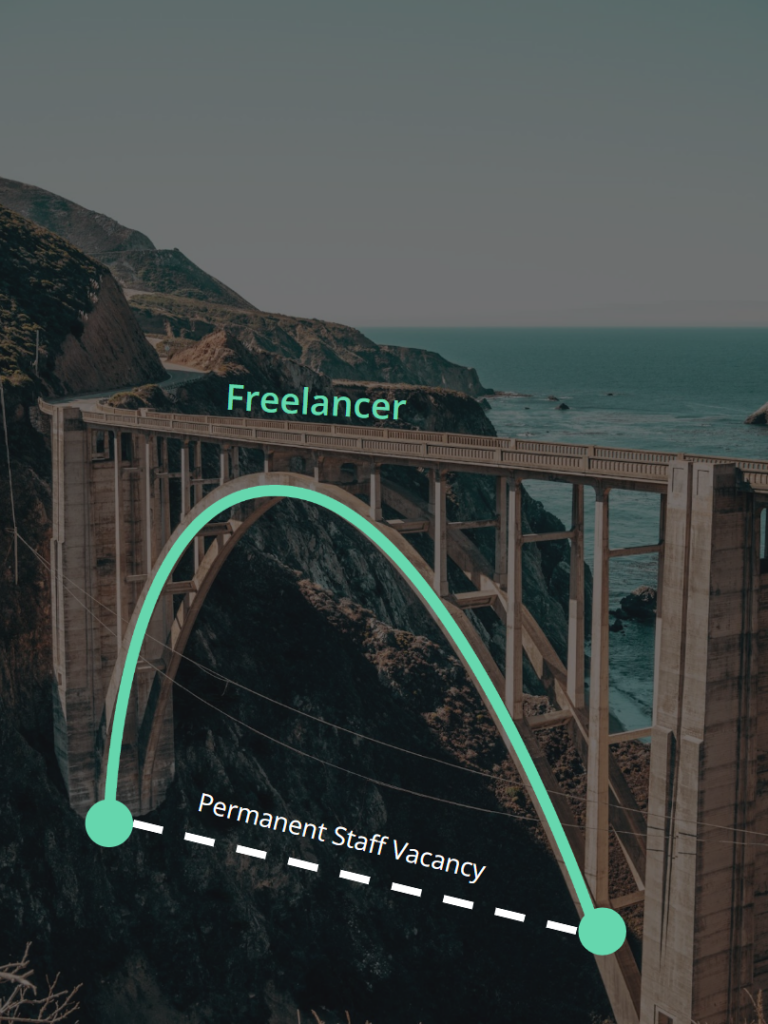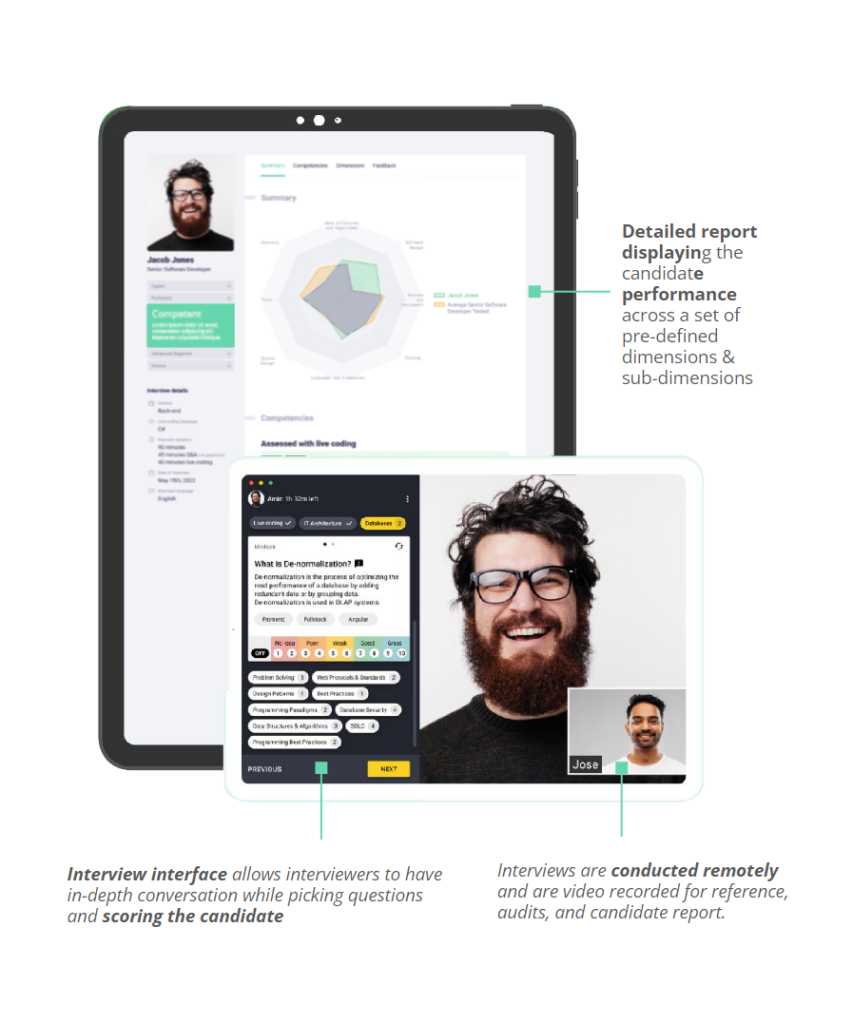Imagine a bustling office filled with talented employees diligently working on projects and driving the company’s success forward. Now, picture one empty desk. It may seem like a minor detail, but that vacant seat holds a hidden cost that silently chips away at an organization’s profitability and potential.
Have you ever considered the impact that one vacant seat can have on your organization? In this article, we will delve into the concept of the cost of vacancy (COV), explore its consequences, discuss how to calculate it, and provide strategies for minimizing it.
WHAT IS THE COST OF VACANCY?
In today’s tech industry, the time to hire an IT specialist has increased to an average of 7.7 months. The costs associated with the time it takes to fill a vacant position is what we call the cost of vacancy. This cost reaches far beyond the HR department’s efforts to fill a role, seeping into every aspect of the organization, causing a range of disadvantageous effects:
The tasks and responsibilities of the vacant role are often redistributed among existing employees. As a result, the increased workload can lead to disruptions, ultimately decreasing productivity.
An unfilled position creates a gap in specialized skills and domain knowledge within the organization. Based on McKinsey research, 87% of companies are aware that they have a skills gap, or will have one within a few years. This gap can hamper innovation, problem-solving capabilities, and the ability to make informed decisions, ultimately reducing the organization’s overall performance.
The absence of a key employee may lead to delays in product or service launches, an inability to respond quickly to market demands, and a reduced capacity to capitalize on emerging trends.
Employees may experience increased stress and workloads as they try to compensate for the absence of a team member. More than 80% of employees feel stressed at work, and more than 50% quit their job due to burnout.
HOW TO ESTIMATE THE COST OF VACANCY?
An average employee’s value for an organization is three times higher than their annual salary. While there is no universally standardized formula for calculating the cost of a vacancy, there are effective methods available to help approximate the cost. One commonly used approach involves considering factors such as the position’s average salary, business relevance, and average hiring time.
The average compensation provided for a specific role within an organization. It can be determined by analyzing internal information, such as the organization’s salary structure and policies, or by referring to external sources such as local or industry data.
Business relevance involves evaluating the significance of filling a position in relation to the organization’s operations, goals, and overall strategy. The level of relevance is determined by two key factors: seniority level and hiring urgency:
- Seniority level: categorizes the experience, expertise, and responsibility associated with a position into three stages: low, middle, and high. Each stage is assigned a value of 1 to 3, respectively, with higher values indicating greater seniority.
- Hiring urgency: assessed based on factors such as the immediate need for the role, and the potential negative consequences of the vacancy if left unfulfilled. It is divided into three categories, represented by values of 1 to 3, increasing with the number of months. A higher value indicates a greater sense of urgency and potential impact on the organization.
Hiring time refers to the typical duration required to fill a vacant position. Longer hiring processes can result in extended periods of reduced productivity, increased workload on existing employees, and potential delays in projects or business initiatives. Considering the average hiring time helps estimate the period during which the organization may experience the negative effects of the vacancy.
Curious to know how much a vacancy might be costing your business? Determine the business relevance of your vacant position and try our cost of vacancy calculator.
HELPING VOLKSWAGEN GROUP BRANDS MINIMIZE THE COST OF VACANCY
At Futurepath, we understand the significant impact of unfulfilled vacancies on your organization’s productivity and bottom line. That’s why we offer comprehensive solutions to help you minimize vacancy costs and maintain operational efficiency. Here are some of the strategies and services we provide:
STRATEGY: FREELANCERS TO BRIDGE HIRING GAPS
Temporary hiring gaps can cause disruptions in workflows and productivity. Therefore, we offer a solution to tackle this challenge. Our pool of highly skilled freelancers serves as a reliable resource to bridge hiring gaps for permanent staff vacancies and cut vacancy costs.
Jumpstart Projects (<2 Weeks)
Projects put on hold are costing you time, money, and momentum. Freelancers keep your wheels turning.
Seamless Handovers
Once you’ve filled your permanent staff vacancy, our trained freelancer will start handing over projects.
Retaining Expertise
After bridge placements are complete, we offer our freelancers new opportunities to keep working for our VW Group clients.

SERVICE: ACTIVE SOURCING
While traditional recruiting channels like job postings and referrals have their value, they often fall short of accessing the full talent spectrum. Through our active sourcing service, you gain an additional recruiting channel that proactively goes after top candidates that fit your roles.
STRATEGY: TALENT POOL
Our talent pool includes 11000+ professionals across 10+ technology domains, ready to start working for you within a few days. It’s continuously updated and nurtured, ensuring that we have readily available candidates when you need them.

SERVICE: TECHNICAL ASSESSMENTS
We conduct technical assessments to evaluate candidates’ technical skills and ensure they meet your specific requirements. Use our skill assessments (back-end, front-end, mobile, software architect, etc.), or we can build an assessment for you.
While the estimated cost of a bad hire ranges from five to 27 times the amount of the person’s actual annual salary. By rigorously vetting candidates upfront, we minimize the risk of future turnover, ensuring a strong match for your organization.
Shift your recruitment into overdrive!
Schedule a call with us and discover how our services can help you reduce your cost of vacancies.
Schedule a call


